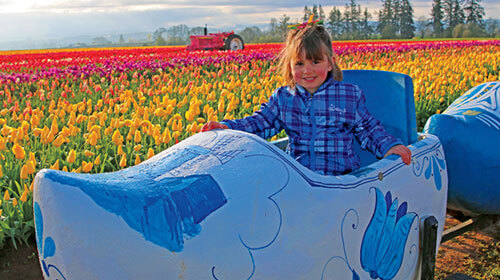Our family farm began in 1950 with the marriage of Ross and Dorothy and their purchase of the main farm. They worked hard expanding the farm and getting their six children through college.
The Iverson family began growing tulips in 1974. The first tulips belonged to Dr. Clyde Holman who would ship some of the bulbs to Indiana every year for forcing. When he retired in the late 1970’s we bought a few acres of bulbs from him.
By the early 1980’s we had over 15 acres and needed to broaden the market base. Seeing this as an opportunity, in 1983 we started the Wooden Shoe Bulb Company which had a name change to Wooden Shoe Tulip Farm in 2001.
In the first few years we printed up black and white order sheets and sales were slow. Then, in 1985, we opened our fields for Easter weekend. The rest you may say is history.
Now we open our fields for an entire month from the end of March to the first week of May. We have expanded from the early days and besides taking bulb orders and selling cut flowers, now sell potted tulips, gift shop items, and have all sorts of food and activities on weekends for all members of the family.
In recent years we have also added our Fall Gift Shop, Wine Tasting Room and a summer Event Garden.
Learn more about the Wooden Shoe Tulip Festival or view the latest update on the condition of the fields on our Bloom Status page.


